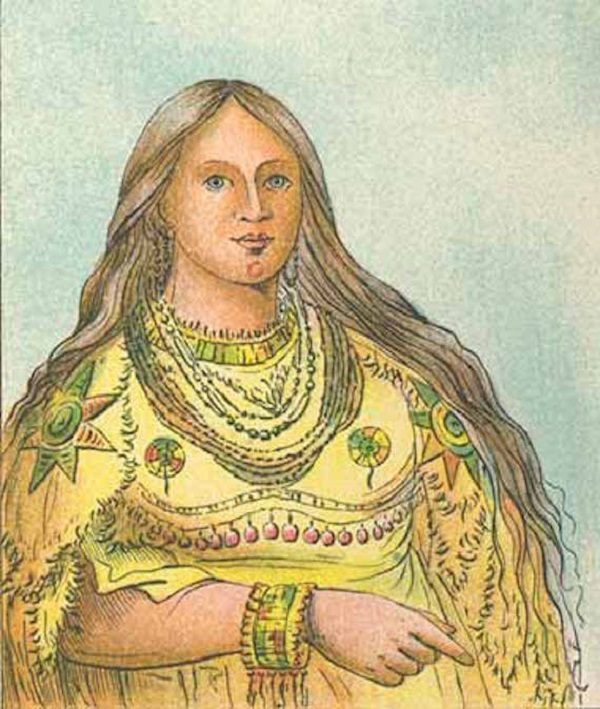One such tribe was a mysterious group of Native Americans who appeared to explorers as something quite European in nature, although their ways and beginnings have always been cloaked in shadows. Known mostly from historical accounts, their origins remain murky, their lineage uncertain, and they are a historical curiosity we may never fully understand.
During the era of early European contact, the native peoples of North America held many curiosities for explorers and settlers coming to this new, wild land. These tribes were numerous, and displayed rich variety between different cultures, as well as myriad languages, customs, and traditions that inspired awe, wonder, curiosity, bafflement, and even fear in the European adventurers who bravely delved into this uncharted new world and tried to tame it. Yet as fascinating as these new peoples were, perhaps the most interesting was an alleged tribe of natives who were said to look decidedly Caucasian in nature.
The first reports of what would come to be known as the Mandan tribe began to trickle out from French explorers in the region of the Missouri River in present-day North and South Dakota in the early 1700s. These natives were said to have rather fair skin and to have red or blonde hair and blue or grey eyes, and indeed especially the women were purportedly so Nordic in appearance that if it were not for their clothing they were said to be nearly indistinguishable from whites. In 1738, the French Canadian trader Sieur de la Verendrye made the first official outside contact with the Mandan and described them as living in 9 villages at a tributary of the Missouri river called the Heart River, and noted that they also exhibited customs that were decidedly more European than the neighboring tribes.
By 1784 the word had gotten out on this mysterious tribe of blue-eyed Indians, and they were featured in the media, with the August 24, 1784 edition of the Pennsylvania Packet and Daily Advertiser proclaiming that a new tribe of white people had been discovered and that they were "acquainted with the principles of the Christian religion" and "extremely courteous and civilized." Perhaps one of the more famous of the explorers to come across the Mandan was none other than Lewis and Clark, who visited the tribe in 1804 and described them as "half-white," as well as peaceful, civilized, courteous, and polite. They also noted that the tribe's numbers had dwindled significantly due to the frequent small pox epidemics that terrorized them, as well as attacks against them by neighboring tribes, namely the Assiniboine, Lakota, Arikara and the Sioux.
Of course this all led to intense speculation as to what the origins were of this bizarre tribe, and one of the earliest ideas put forward was that they were the descendants of pre-Columbian explorers to the New World. For instance there were many legends from various regions of the present day United States of Welsh speaking natives, perhaps descended from Welsh settlers coming to these shore in the 12th century, in particular a Prince Madoc, who along with his followers was said to have emigrated to America from Wales in about 1170.
One Welsh explorer by the name of John Evans became so convinced that this was the case with the Mandan that he launched an expedition up the Missouri river in 1796 to search for them and prove that their language was derived from Welsh and contained Welsh vocabulary. Evans would trek up the river in the winter of 1796 and he could find no evidence whatsoever of the Welsh influence he had been so sure he would find, forcing him to concede that this was not where the Mandan origins lay. Indeed, he became extremely skeptical that there were any of these legendary "Welsh Indians" at all, saying in a letter to a Dr. Samuel Jones:
Thus having explored and charted the Missurie for 1,800 miles and by my Communications with the Indians this side of the Pacific Ocean from 35 to 49 degrees of Latitude, I am able to inform you that there is no such People as the Welsh Indians.Read entire article here.




Reader Comments
Interesting that they sided with the Spanish. Must have felt more kinship with them than the indigenous population whom they had probably been battling for hundreds of years.
I have long suspected that the people were intentionally jacking with me.
not that it bothered me much.
in today's world. it has been confirmed to me. that I am in fact a target.
but this is NOT news to me.
what HAS changed... is that it is my race that they have a problem with.
I live in the deep south of the USA. in a place where mixed race couples are common place. as well as bi-racial children.